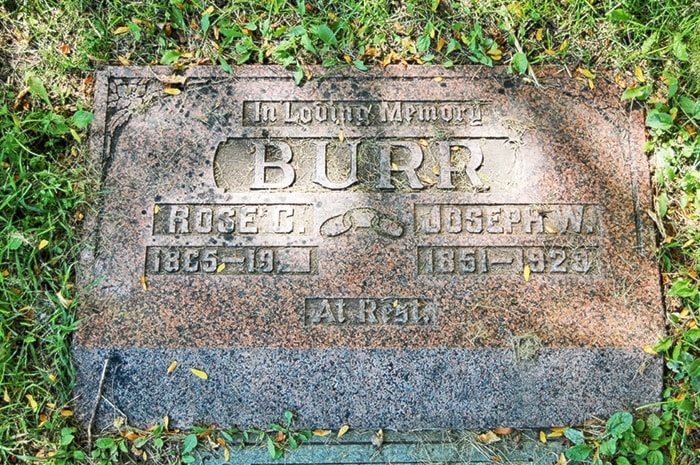By October 1910 - more than a year after the hold-up of a CPR train near Kamloops, and the murder of Special Constable Isaac Decker in Ashcroft by one of the bandits - the search for Bill Haney, Decker’s murderer, had ended. Whether Haney and “Edward Smith”, convicted in Montana that month for assault (and identified by more than one person as Haney) were the same man will probably never be known.
Decker left behind a wife, Lena, and a son, Archie. Lena was born in 1880, and was the daughter of John Tetlenitsa, Chief of the Pokeist Band near Spences Bridge (although Lena’s maiden name is transcribed as “Teettaneecha” on her marriage certificate). There is no record of her death, nor of where she is buried, although it seems likely that she was buried in the cemetery at Pokeist church.
Archie Decker, born in April 1898, was only 11 when his father was killed, and it seems almost certain that the boy found himself an orphan at a young age. The 1911 Census of Canada shows that in that year he was living in Vancouver, in the home of a Thomas and Mary-Jane Holmes on 11th Ave. E.; the enumeration form describes him as a “lodger”. Also pointing to his orphan status is the fact that the CPR put aside $2,000 in trust for young Archie’s future, which suggests he had no parent living who would be able to provide for him.
Alas, the grim shadow of World War I intervened. On Sept. 30, 1915 Archie Decker joined the 1st Pioneer Battalion of the Canadian Engineers. He was only 17, but lied about his year of birth, claiming it to be 1897, as his war record shows. That same record indicates young Archie named “T. Holmes, 11th Ave. E., Vancouver” as his next of kin, and that Archie was the ward of a T.H. Holmes, 58th Ave. E., South Vancouver. A single poignant line in his war record tells the rest of the story: the box marked “Survived War” reads simply “No”. He died on June 13, 1916 on the final day of the Battle of Mont Sorrel near Ypres, Belgium. He is one of the 55,000 Commonwealth soldiers who were lost without trace defending the Ypres Salient and who are now commemorated at the Menin Gate Memorial in Ypres. Every night at 8 pm Archie and his comrades, so far from home, hear buglers play “The Last Post” in their honour, under an inscription reading “To the Armies of the British Empire who stood here from 1914 to 1918 and to those of their dead who have no known grave.”
We know where Special Constable Isaac Decker is buried, but in a way he, too, has no known grave. He was laid to rest in Ashcroft cemetery on July 1, 1909, and fittingly enough is buried beside his former commanding officer and friend, Joe Burr, who died in 1929. Burr’s grave is marked, and easy to find. Beside it, however, where a plan of the cemetery shows Decker’s grave to be, there is only grass. If he ever had a headstone or grave marker then it is long gone, disintegrated or eroded or damaged beyond repair and never replaced.
Decker was a policeman in Ashcroft for several years, respected and liked by his colleagues and by the community. When, during the manhunt for the CPR bandits, Joe Burr needed a trustworthy deputy to stand in for him and head up the Ashcroft detachment during Burr’s absence, Isaac Decker immediately said yes. He returned to Ashcroft and was sworn in as a special constable. Within hours he would be dead, shot on the bank of the Thompson while trying to apprehend the men who held up the train, and who had evaded capture until that moment.
It is a shame that a man who gave his life in service to his community should be buried in an unmarked grave. Unfortunately, Isaac Decker is one of several people buried in the Ashcroft cemetery who have no stone marking their resting place. The Village has managed the site since 1974, but prior to that it was in the care of a private company, and unfortunately all the records up to the time when the Village took over the cemetery have been lost. Thanks to the survival of an old plan of the site we know who is buried where; what we do not have are contact details for any family members. In the absence of family members, there is usually no one interested in ensuring that damaged or missing headstones are fixed or replaced.
It is not just members of the family who can erect grave markers for the deceased, however. That is why a drive to raise funds is being started, so that a headstone commemorating Isaac Decker’s life and death can be made and installed. It is hoped that members of the community - businesses and private individuals - will be able to step forward and help, by donating to the Isaac Decker Memorial Fund. Funds raised will go toward having a marker for Isaac Decker’s grave purchased, engraved, and installed in the proper location in Ashcroft cemetery, with any excess funds being donated to the Ashcroft Museum for exhibitions or acquisitions. Donations can be made to the Isaac Decker Memorial Fund, care of the Ashcroft Journal, either at the Journal office on 4th Street in Ashcroft, or by mail to P.O. Box 190, Ashcroft, V0K 1A0.
Let us give Constable Isaac Decker a fitting memorial, in the town which he served so well, and where he gave his life in the line of duty.
Many thanks to Kathy Paulos of the Ashcroft Museum and Archives for her invaluable assistance during the writing of this series.
Barbara Roden
